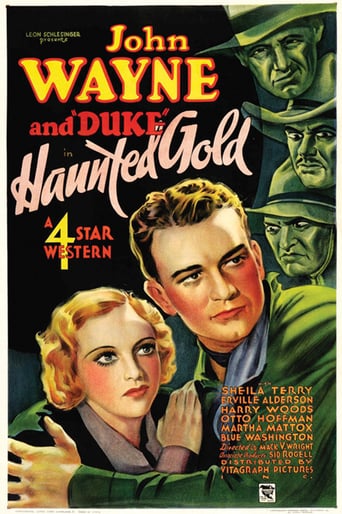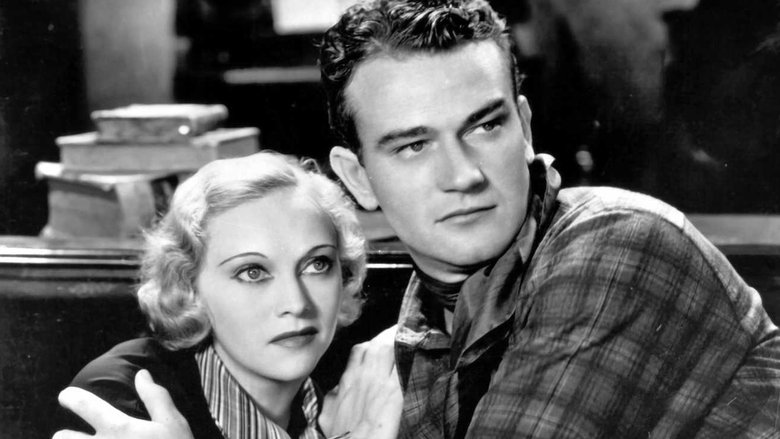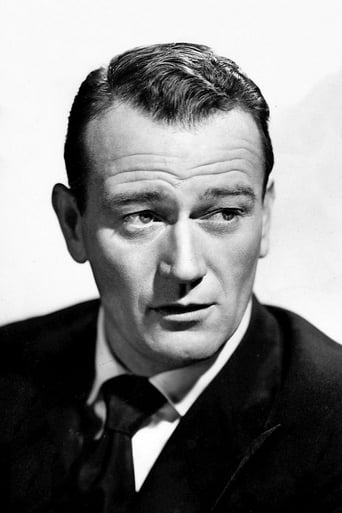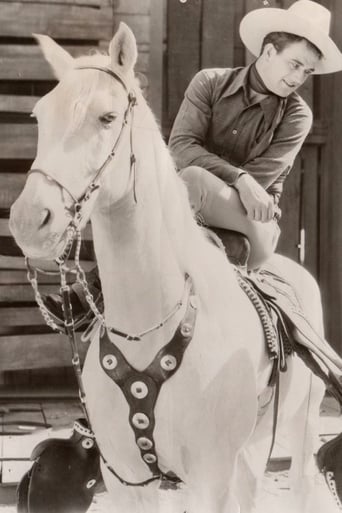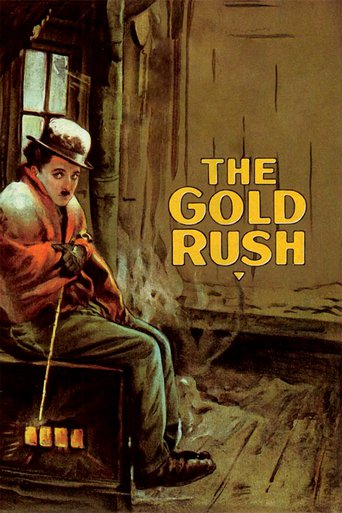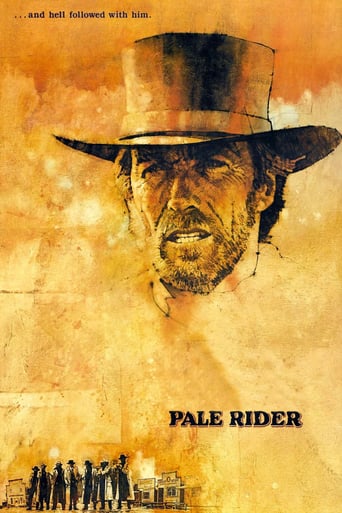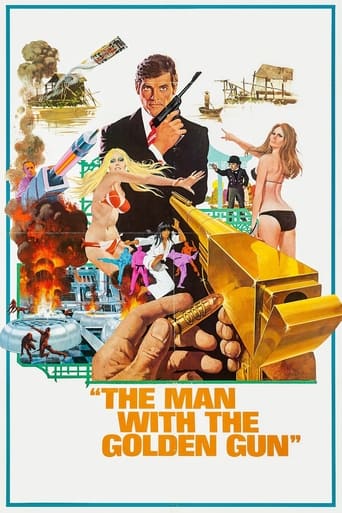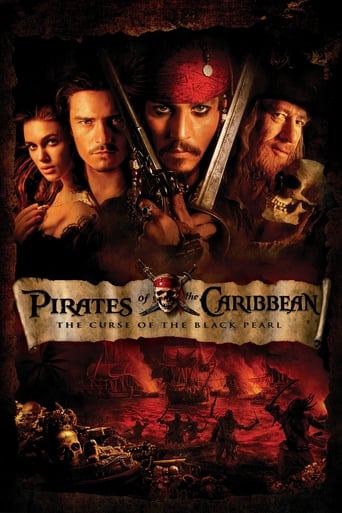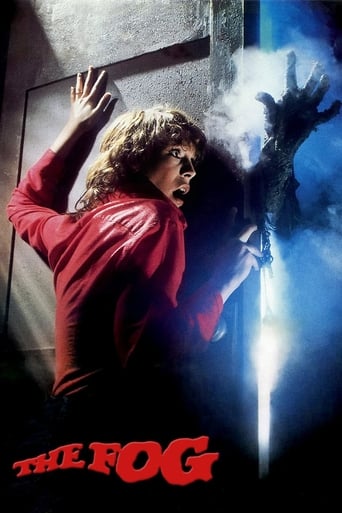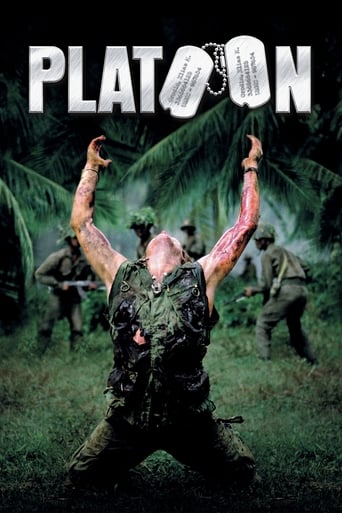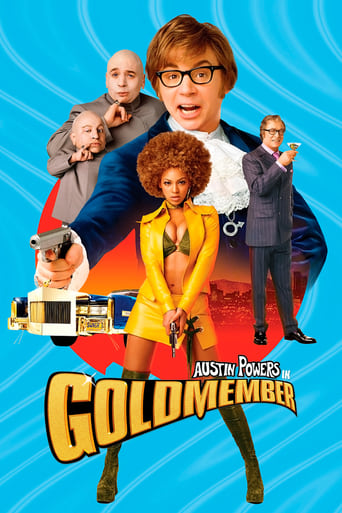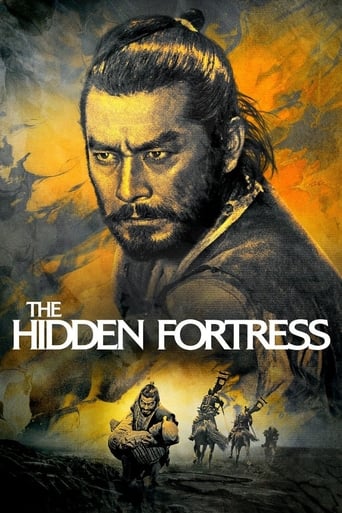Haunted Gold (1932)
John Mason returns to the Sally Ann mine to claim his half share. Janet Cater also returns although her father lost his half share to Joe Ryan. Ryan and his gang are also there to get the gold. A mysterious Phantom is also present. Mason's plan to expose Ryan as an outlaw and to force him to turn his share to Janet works. But when distracted by the Phantom, John is made a prisoner by the gang.
Watch Trailer
Free Trial Channels
Cast


Similar titles
Reviews
Truly Dreadful Film
Sadly Over-hyped
Horrible, fascist and poorly acted
It is both painfully honest and laugh-out-loud funny at the same time.
In the 1930s, John Wayne starred in a long string of low-budget westerns--even by B-movie standards. Despite their very low production values, the films are mostly pretty watchable today--making them among the better western series films of the day. However, even though they GENERALLY were good films, there were also quite a few a turkeys--and this one was definitely a terrible film. Much of the reason is the weird decision to give Wayne a black sidekick--a definite rarity among this genre. While this would seem like a very progressive thing for 1932, it definitely was not due to the horrible sort of character this man (Clarence) was in the film. I think the only reason a black man was cast was to promote the old stereotype of a stupid and scared black man--a definite cheap laugh getter of the day. Throughout the film, Clarence refers to Wayne as 'boss' and spends most of his on-screen time being afraid--and is thoroughly offensive. It is cringe-inducing to say the least!"Haunted Gold" is not just bad because of the negative black character, however. Political correctness aside, there is little (other than excellent stunt-work) to recommend it. The plot is pretty silly. Seeing Wayne and the rest riding about on horses and acting the way they do even though the film is apparently set in 1932 is pretty weird. Also, the idea of a caped creep scaring people off their ranches is awfully silly and the film abounds with clichés and stereotypes.As for the stunts, however, some of these cheap old films did have amazing action sequences. The horse knocking the guy off the cliff was clever, the scene of the guy falling from the gondola was cool, Clarence supposedly falling through the floor spectacular and the fight on an out of control buckboard amazing. But stunts alone do not make up for a thoroughly terrible film. Offensive and stupid...with cool stunts. John Wayne fans can look elsewhere for a film worth seeing.
If you're a fan of these old time B Westerns, you'll probably get a kick out of a minor sub-genre of ghost themed oaters that cropped up from time to time back in the day. "Haunted Gold" just might be the earliest, at least the earliest of a handful I've come across in recent years. There's 1936's "Ghost-Town Gold" with the Three Mesquiteers, a 1945 programmer with Buster Crabbe and Fuzzy St. John called "His Brother's Ghost", Fuzzy again with Lash La Rue in 1947's "Ghost Town Renegades", and 1950's "Streets of Ghost Town" with Charles Starrett as The Durango Kid. Oddly, this early John Wayne flick for Warners might be the best of the lot, with decent production values and some interesting elements to elevate one's interest. For one, Wayne's sidekick in the picture was a black man, portrayed by Blue Washington as John Mason's (Wayne) self appointed bodyguard and day time cook at Mason's ranch. Another was Wayne's horse Duke, who got shared billing with him at the top of the credits. I'll get back to Duke in a bit.The haunted theme gets an early workout with some cartoony bat images during the opening credits sequence; seeing Leon Schlesinger's name associated with the picture as producer made sense at that point, as he went on to helm Warner's Looney Tunes unit shortly after. There's also good use of a howling wolf, a darkened cemetery, mysterious shadows and a lights out sequence at the villain shack. Blue Washington's presence was undoubtedly meant to personify the wide eyed, scaredy cat stereotype, though his physical stature didn't seem to lend itself much to comic relief. As others have mentioned on this board, some uncomfortable and demeaning racial slurs were directed at him, like darkie, smoky, and a reference to his watermelon accent. He even had a line - "Lordy boss, a spook, the Phantom himself done snitched it" - that seemed to cast a racial tone. Of course this was not uncommon during the Thirties and Forties, with films that often used epithets with characters of ethnic origin; just catch a Charlie Chan flick for some more examples.As for the story, it pretty much boils down to one of your classic B Western plot elements, with evil villain Joe Ryan (Harry Woods) attempting to swindle John Mason and Janet Carter (Sheila Terry) out of their shares of the long abandoned Sally Ann gold mine. Both had been summoned to Ghost City by an unknown letter writer revealed by the end of the story, but you'll have to watch to find out who.Back to Duke, the horse that is. You know, he had quite a bit of quality screen time in the picture, and in a move I haven't seen before, he uses his horsepower (sorry, couldn't resist) to help rider Mason pull down a shack on the bad guy posse. Later on, he comes to the other Duke's rescue in the stalled cable car by knocking one of the henchmen off a cliff (yikes!), and absolutely going berserk to pull the rope tether off the hitching post. I think Duke might have given Trigger a run for the Smartest Horse in Movies.Interestingly, Wayne portrayed a character named John Mason in one of his programmers for Monogram's Lone Star unit in 1935, "The Dawn Rider". In another harbinger of things to come, Wayne closes out the picture in a smooch with his leading lady, Sheila Terry, in about the same way he does with her in 1934's "Neath the Arizona Skies". That same year, "The Lawless Frontier" has Wayne's Sheriff Tobin calling the new Mrs. Tobin by phone to close out the story, so in that one, they actually wound up getting married.
Haunted Gold (1932) ** 1/2 (out of 4) This was one of six films John Wayne made for Warner's years before he would become famous after the success of STAGECOACH. Wayne has to share top billing with Duke, his horse, but I'm sure he didn't mind that too much. Rival gangs both want the claim to a mine, which might be full of gold but the big problem is that it's haunted with the spirit known as The Phantom. This early blend of the Western and "old dark house" genre isn't as bad as you'd expect, although there's some rather strange and mean spirited racism throughout the movie. One interesting thing was that Blue Washington, a black actor, got to play the sidekick to Wayne, which was a nice change of pace considering most sidekicks at that time were white. This new item quickly turned sour as for the most part he was just playing the ignorant stereotype, which included various jokes being thrown at him including being called "Darkie" and one scene where he pretends to be The Phantom only to have a guy say he wasn't because of his "watermelon accent". Outside of that, this is a fairly enjoyable film that manages to make good use of both genres. The horror elements start off with an animated sequence with some bats and the shadow of what's clearly meant to be a Dracula like character. We get the various "spooky" items including cobwebs, black cats, rats and other goodies. The red herrings pop up from time to time and are way too obvious. Check out the scene where Wayne is having coffee with his girl (Sheila Terry) only to have the maid acting like a bad guy. How obvious and over the top she is made me break down laughing. Wayne gives a decent performance even though he hadn't quite gotten his style down yet but I don't think there's any doubt that Duke gets the best scenes.
John Wayne made scores of B-Westerns in the thirties, and in some ways the few he did for Warner Bros. were among the more interesting, having somewhat better production values and execution. There are elements in "Haunted Gold" that would never have been covered by the budget of one of his Monogram programmers, but that's not saying much. It's pretty much the same old thing we'd see from Wayne for the next six or seven years -- good guy helps a sweet young thing outwit nefarious baddies out to cheat her or him out of something. Wayne has physical charm yet is still a callow actor at this time, though no one does much real acting in these. There's no George Hayes to lend true gravitas to the situation, and Erville Alderson, while always an interesting specimen to look at in the movies, is really terrible as a performer in the solid older man part. It's all not really much, until an exciting fight in a cable car between Wayne and an outlaw near the end. What is most notable (and most difficult) about the movie is the sidekick character, Clarence. "Haunted Gold" isn't the first nor would it be the last Hollywood movie to give a black actor bug-eyed terror and clichéd dialect for racial comic effect. But if there can be degrees of acceptability to such stereotyping, this movie seems to take it to a painful degree. For one thing, Blue Washington, who plays Clarence, is a strong, masculine figure of a man -- tall, muscled, intelligent of mien -- yet he scampers about whimpering about spooks and monsters like skinny little Willie Best. It seems immeasurably more degrading (though I'm not suggesting it wasn't degrading for other actors). Perhaps part of the difference is that Willie Best and Mantan Moreland, when they did their frightened "darkie" routine, were funny -- very funny. Watching Blue Washington do this stuff is like watching Sidney Poitier or James Earl Jones do it -- it's difficult not to focus on the humiliation of the actor. The script contains plenty of references to "darkies" and "Smoky" and "that watermelon accent," though Wayne's character treats Clarence more as an amusing comrade than a dimwit or a servant. But none of this makes "Haunted Gold" less uncomfortable an experience, at least if one has any empathy for Blue Washington, an actor who it seems had talent, even if it is sublimated beneath insensitive clichés here.

